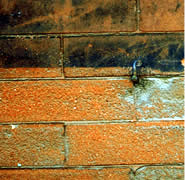
The Secretary of the Interior's Standards for Rehabilitation are ten principles to follow when planning rehabilitation work on a historic building. By emphasizing repair over replacement and accommodating reasonable change for new uses, they seek to ensure the preservation of those qualities which are important to the building’s historic character.
Because rehabilitation focuses on successfully adapting historic buildings for contemporary uses, it may be considered somewhat more flexible than more traditional treatments, such as preservation and restoration. But even though rehabilitation allows for more change, a historic building's distinctive materials, features, and spaces still must be preserved.
A project must meet all ten Standards to be eligible to receive the 20% tax credit.
Points to remember when planning rehabilitation project work:
| Preserve historic materials |
Preserve distinctive features |
Preserve important interior spaces |

